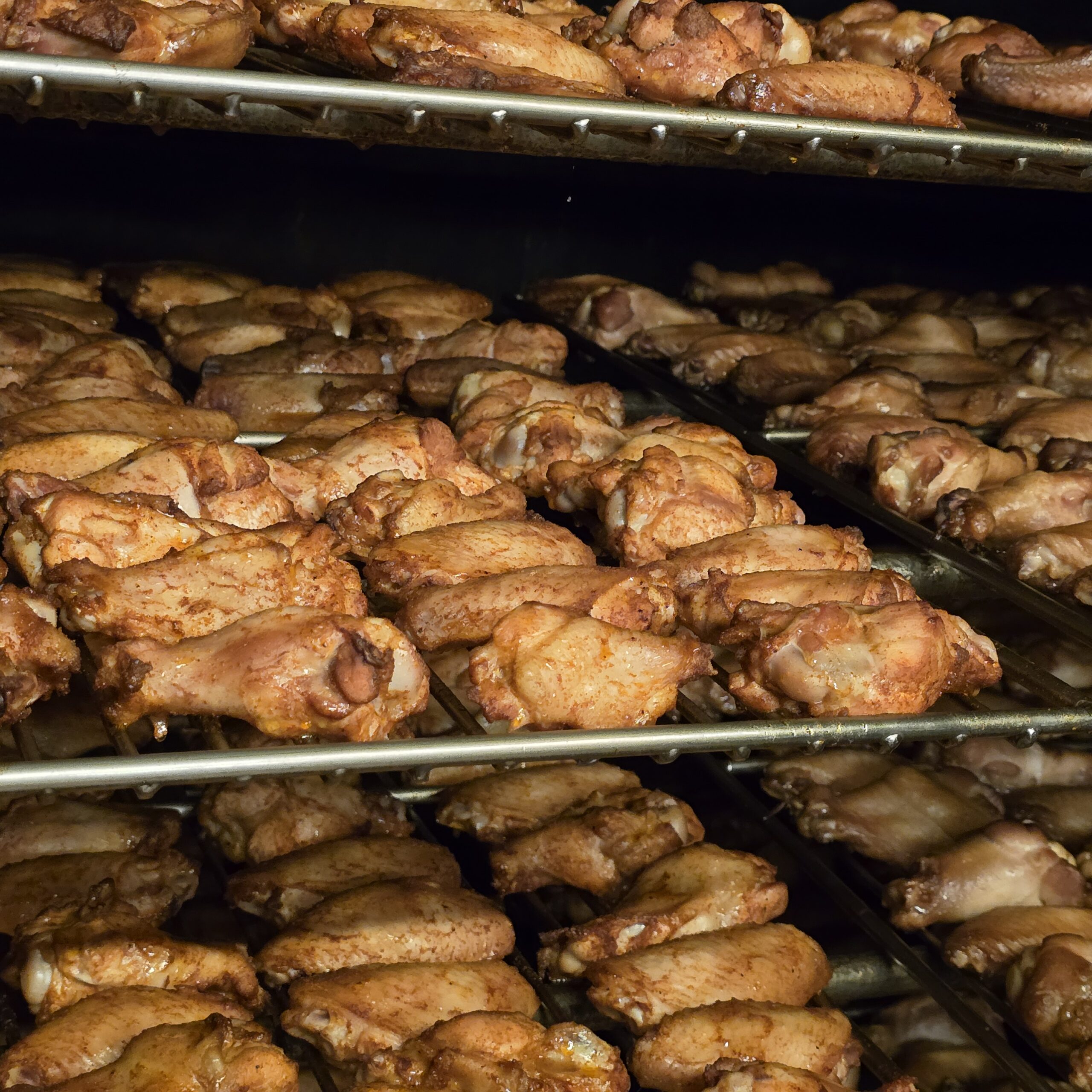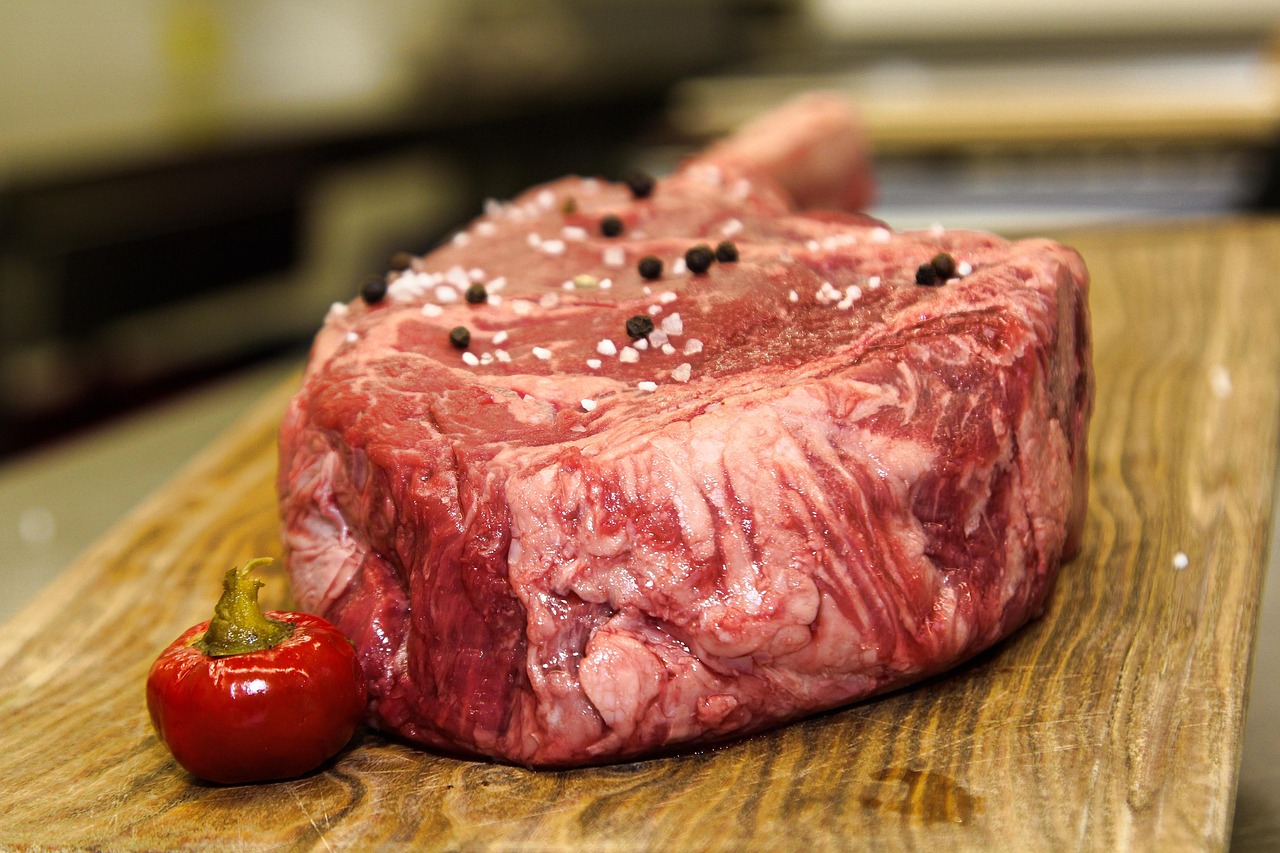In an age of mass production and automated processing, there’s something profoundly satisfying about watching a master butcher at work. At Hackenmueller’s Meat Market, the art of farm to table butchering isn’t just a nostalgic throwback; it’s the foundation of everything we do. For 85 years, we’ve maintained the time-honored techniques that transform quality livestock into the premium cuts our customers have come to expect.
The Difference Between Craft and Commerce
Walk into any grocery store today, and you’ll find meat that’s been processed in massive facilities, cut by machines, and packaged for maximum efficiency. While this approach serves its purpose in feeding the masses, it lacks the personal touch and attention to detail that defines true butchery. At Hackenmueller’s, every cut is made by hand, every piece of meat is individually inspected, and every customer receives the benefit of decades of accumulated knowledge and skill. Our farm to table butcher process is the best for high quality cuts and delivers the most flavorful meats possible.
The difference is immediately apparent to anyone who knows what to look for. Machine-cut meat often shows signs of tearing or crushing, which can affect both texture and flavor. Hand-cut meat, on the other hand, is cleanly separated along natural muscle lines, preserving the integrity of the fibers and ensuring optimal tenderness. It’s a distinction that might seem subtle to the casual observer, but it makes all the difference in the final product.
Techniques Passed Down Through Generations
The butchers at Hackenmueller’s didn’t learn their trade from textbooks or training videos; they learned it the old-fashioned way, working alongside experienced craftsmen who taught them the subtleties of the profession. This apprenticeship model ensures that knowledge isn’t just transferred, but truly understood and internalized.
Take the art of breaking down a side of beef, for example. A skilled butcher can look at a carcass and immediately identify the optimal cutting lines that will yield the most tender, flavorful steaks. They understand how the grain of the meat runs, where the natural separations occur, and how to maximize both quality and yield. This knowledge comes not from memorizing charts or following standardized procedures, but from years of hands-on experience and careful observation.
Our butchers know that a T-bone steak cut too thick will be difficult to cook evenly, while one cut too thin won’t develop the proper crust. They understand that the direction of the cut can affect tenderness, that the angle of the knife matters, and that even the temperature of the meat during cutting can influence the final result. These are the kinds of details that separate true craftsmanship from mere processing.
The Tools of the Trade
A master butcher’s knife collection is like a musician’s instruments; each tool has its specific purpose and must be maintained with meticulous care. At Hackenmueller’s, our butchers use knives that have been sharpened to razor precision, some of which have been in service for decades. The weight, balance, and edge of each knife is perfectly suited to its intended task.
The breaking knife, with its curved blade and sharp point, is ideal for separating large muscle groups. The boning knife, narrow and flexible, can navigate around bones and joints with surgical precision. The cleaver, heavy and broad, makes quick work of cutting through bone and cartilage. Each tool requires different techniques and handling, and mastering their use takes years of practice.
But tools are only as good as the hands that wield them. Our butchers have developed the muscle memory and hand-eye coordination that allows them to work with speed and accuracy that would be impossible for someone without their training. They can feel the resistance of the meat, sense when they’re cutting with or against the grain, and adjust their technique accordingly.
Quality Control at Every Step
Farm to table butchering isn’t just about cutting technique, it’s about maintaining quality standards throughout the entire process. From the moment a piece of meat arrives at our shop, it’s subjected to rigorous inspection. Our butchers examine the color, texture, and marbling of each cut, ensuring that only the finest products make it to our display cases.
This attention to detail extends to every aspect of our operation. We maintain our cutting surfaces at optimal temperatures to prevent bacterial growth and preserve freshness. We rotate our inventory to ensure that customers always receive the freshest possible products. We trim excess fat and remove any imperfections that might affect quality or appearance.
The result of this meticulous approach is evident in every product we sell. Our steaks have the deep red color and fine marbling that indicates proper aging and handling. Our ground beef is coarse-ground to preserve texture and flavor. Our sausages are made with carefully selected cuts and traditional seasonings that have been perfected over decades.
Why Traditional Methods Produce Superior Results
The benefits of being a farm to table butcher shop extend far beyond mere nostalgia. Hand-cut meat simply tastes better, and there are scientific reasons why this is true. When meat is cut by machine, the high-speed blades generate heat and pressure that can damage the cellular structure of the meat. This can lead to moisture loss, texture changes, and flavor degradation.
Hand-cutting, by contrast, is a gentler process that preserves the natural structure of the meat. The slower, more deliberate cutting action minimizes cellular damage and helps retain the natural juices that contribute to flavor and tenderness. The result is meat that cooks more evenly, retains more moisture, and delivers superior taste.
Farm to table butchering also allows for greater customization. When a customer has specific needs, perhaps they want their steaks cut to a particular thickness, or they need a roast tied in a specific way, our butchers can accommodate these requests. This level of personalization is simply impossible in a mass-production environment.
Preserving a Dying Art
In today’s fast-paced world, being a farm to table butcher is becoming increasingly rare. Many young people are drawn to careers that offer more immediate gratification or higher starting salaries. The patient apprenticeship required to master butchering doesn’t appeal to everyone, and the physical demands of the work can be challenging.
At Hackenmueller’s, we’re committed to preserving these traditional skills for future generations. We invest in training our staff, we maintain the highest standards of craftsmanship, and we continue to practice the techniques that have served us well for 85 years. We believe that there will always be customers who appreciate the difference that quality and craftsmanship make.
Experience the Difference
The next time you visit Hackenmueller’s, take a moment to watch our butchers at work. Notice the precision of their cuts, the care they take with each piece of meat, and the pride they take in their craft. Ask questions; our staff loves to share their knowledge and help customers understand what makes our products special.
Whether you’re planning a special dinner, stocking up for a family barbecue, or simply want to experience the difference that traditional butchering makes, we invite you to discover what 85 years of expertise can do for your table. Because at Hackenmueller’s, we don’t just cut meat; we practice an art form that has been perfected over generations.
Experience the art of traditional butchering at Hackenmueller’s Meat Market, 4159 Broadway Ave, Robbinsdale, MN. Open Monday-Friday 8AM-6PM, Saturday 8AM-3:30PM. Call (763) 537-4811 for custom orders and special requests.



